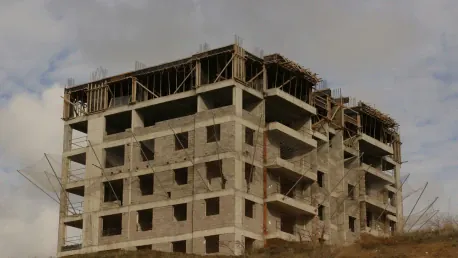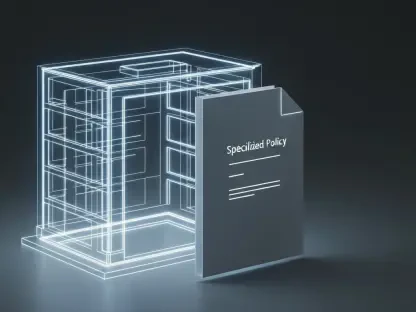The construction industry is facing a significant challenge with the increasing number of abandoned projects. Since 2024, both the private and public sectors have witnessed a notable rise in project failures, primarily due to a lack of transparency. This opacity leads to poor communication, vague estimates, and eventual delays. To combat these issues, adopting transparency measures is crucial for the industry’s progress.
The Necessity of Transparency
The Current State of the Construction Industry
The construction sector is undergoing substantial transformations, not all of which are favorable. In recent years, there has been a concerning increase in the number of projects being abandoned, highlighting the demand for improved methodologies and practices. As the industry becomes more complex, traditional techniques and approaches often fall short, unable to keep pace with modern expectations. This shift has led to an urgent call for new strategies, focusing on enhancing overall efficiency and ensuring sustainable project outcomes. Key among these strategies is the need for greater transparency.
Consequences of Lack of Transparency
A lack of transparency is a major contributor to project failures, leading to poor communication between stakeholders, unclear project estimates, and significant delays. When transparency is lacking, it becomes challenging for project managers to keep all parties adequately informed, resulting in misalignments and misunderstandings. Inefficient communication channels exacerbate the situation, causing crucial information to be lost or misinterpreted. This often culminates in project delays and, ultimately, abandonment. Ensuring clear, open communication is vital in preventing these issues and promoting more efficient project management practices.
Benefits of Increased Transparency
Simplified Inventory Management and Collaboration
Incorporating transparency into construction practices offers substantial improvements, particularly in inventory management and collaboration. With transparent systems in place, businesses can easily access accurate, up-to-date data on inventory levels, optimizing the ordering and allocation of materials. This ensures that projects run smoothly without interruptions due to supply shortages or miscalculations. Additionally, enhanced collaboration becomes possible when all workers and stakeholders are connected through a unified platform. This connectivity ensures that everyone involved in the project is on the same page, minimizing misunderstandings and promoting a more cohesive working environment.
Remote Accessibility and Proactive Problem-Solving
Transparency also enables remote access to site information, which is a significant advantage for oversight and management. With digital platforms that provide real-time data, relevant parties can monitor the progress and state of the project without being physically present on site. This level of accessibility improves overall oversight, enabling quicker responses to any arising issues. Moreover, transparent communication allows project managers to identify potential problems early on, addressing them before they escalate into more significant setbacks. By fostering an environment where issues can be spotted and resolved proactively, transparency helps in maintaining the momentum of the project and adhering to timelines.
Methods for Improving Transparency
Inventory Management Systems and Project Management Integration
Modern inventory management systems are critical in the quest for improved transparency. These systems track supplies accurately, providing real-time data on the number and location of materials. By doing so, they minimize delays caused by miscounts and over-ordering. Moreover, integrating these systems with project management software can further enhance transparency. User-friendly project management tools can share data seamlessly across various channels, ensuring that everyone involved has access to the same information. This integration contributes to more efficient resource allocation and better overall project management.
Creating a Transparent Project Culture
Creating a culture that emphasizes transparency and collaboration is essential for modern construction practices. Moving away from traditional methods, which often involve silos and restricted information flow, to a more open environment can significantly improve project outcomes. When project data is readily available to all stakeholders, joint problem-solving becomes more effective, fostering a sense of mutual accountability and cooperation. This cultural shift not only enhances productivity but also builds trust among team members, which is crucial for the successful completion of construction projects.
Leveraging Advanced Tools
Scaffold Operations Management Systems
Effective scaffold operations management is crucial for the smooth execution of construction activities. By leveraging integrated software systems, construction teams can streamline the handling of scaffold requests, inventory counts, and other related processes, reducing confusion and response times. These systems provide a clear overview of scaffold usage, helping managers allocate resources more efficiently and ensure that necessary equipment is readily available. This level of organization minimizes delays and enhances the overall efficiency of the construction process.
Utilizing BIM and Collaboration Software
Building Information Modeling (BIM) is a powerful tool that offers comprehensive data sets for ongoing project management. By utilizing BIM alongside modern collaboration software, construction teams can ensure that they have access to detailed plans and data, facilitating better decision-making and problem-solving. These tools allow for the identification and resolution of issues more effectively, enhancing communication among stakeholders. The integration of BIM with other digital platforms ensures a cohesive approach to project management, promoting transparency and improving project outcomes.
Centralized Data and Third-Party Partnerships
Centralized Data Management
Implementing centralized data management through cloud-based solutions is another way to improve transparency in construction projects. Having all project data accessible from a single location reduces the time spent on data consolidation and minimizes inaccuracies in estimates. This streamlined approach ensures that all stakeholders have access to the same, up-to-date information, allowing for better coordination and decision-making. Centralized data management also enhances accountability, as all actions and updates are documented and can be tracked easily.
Partnering with Third-Party Services
Collaborating with third-party service providers who offer innovative construction technology solutions can further enhance transparency. These external organizations bring expertise and advanced tools that can integrate seamlessly with existing software used by construction teams. By partnering with third-party services, construction professionals can benefit from state-of-the-art data management systems and improved communication channels. This collaboration ensures that project data is handled efficiently and transparently, contributing to better project management and successful outcomes.
Conclusion on Construction Industry Evolution
The Path Forward
For the construction industry to address issues such as project abandonment and delays, it must embrace modern technology and transparent practices. The adoption of advanced tools, transparent communication, and collaborative project cultures are key strategies. By implementing these measures, construction professionals can deliver projects on time, maintain quality standards, and manage costs effectively. This evolution towards transparency and technology will foster a more resilient and efficient construction industry.
Insights from Industry Experts
The construction industry is grappling with a major issue: the rise in abandoned projects. Since 2024, there’s been a significant increase in both private and public sector project failures. The primary cause of these setbacks is a lack of transparency in the industry. When transparency is lacking, it leads to poor communication, unclear estimates, and eventually, delays that derail projects. To address these challenges effectively, implementing transparency measures is key. With clearer communication and better estimates, the industry can make considerable progress. Enhanced transparency ensures that project timelines, costs, and expectations are properly managed, reducing the likelihood of project abandonment. It also fosters trust among stakeholders, streamlines operations, and promotes accountability. Thus, prioritizing transparency can transform the construction sector, helping to revive and successfully complete projects that might otherwise fail.









